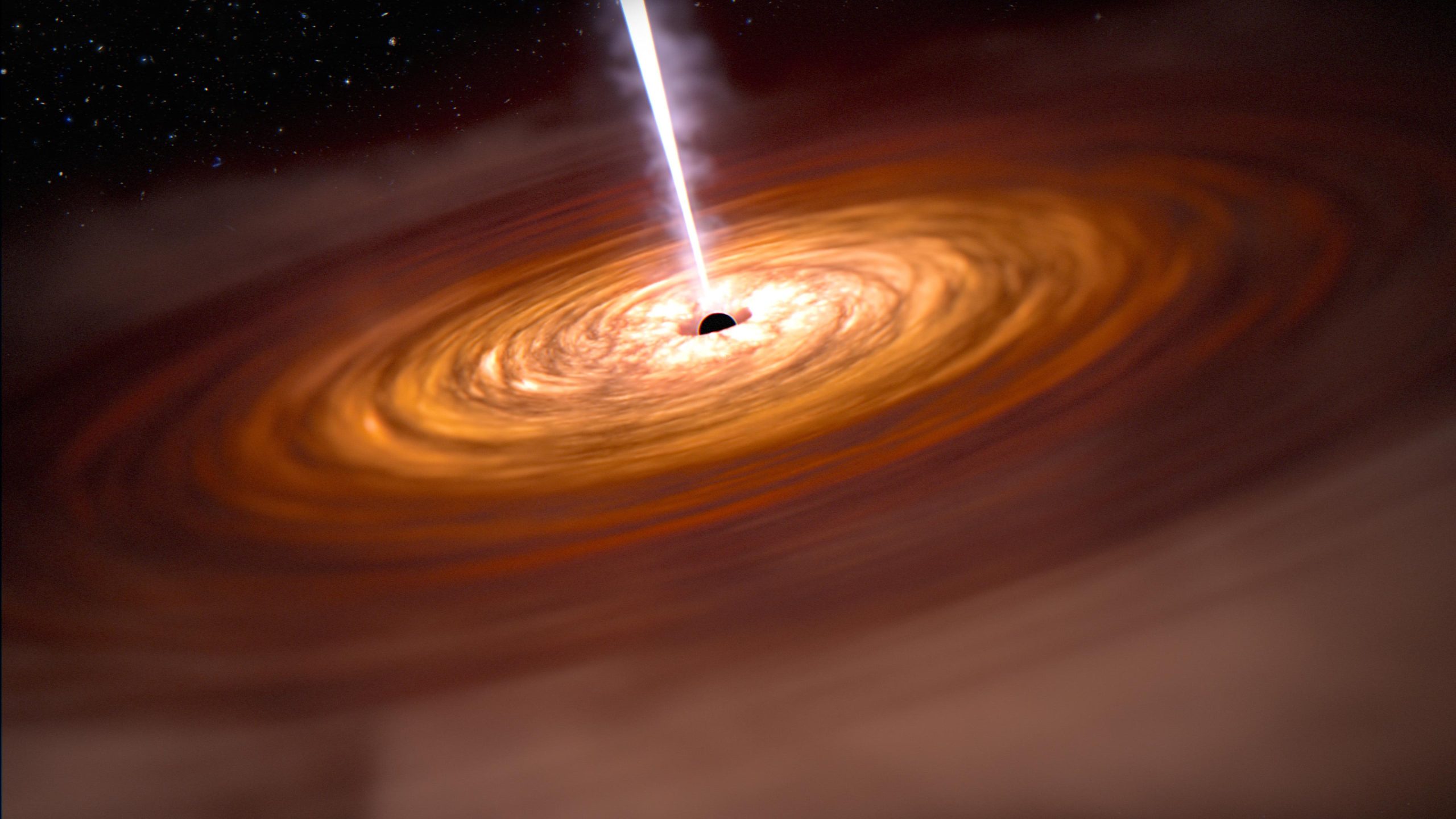Ilustración de un cuásar y una galaxia que rodea al cuásar. Según una investigación realizada por científicos de las universidades de Sheffield y Hertfordshire, los cuásares, los objetos más brillantes y poderosos del universo, se encienden al colisionar galaxias. Este descubrimiento proporciona información importante para comprender cómo operan y se alimentan los cuásares, lo que contribuye a nuestro conocimiento de la historia del universo y el futuro de la Vía Láctea. Crédito: NASA, ESA, CSA, Joseph Olmsted (STScI)
Los científicos han descubierto uno de los mayores misterios de los cuásares, los objetos más brillantes y poderosos del universo, al descubrir que son encendidos por galaxias en colisión.
- Descubiertos por primera vez hace 60 años, los cuásares pueden brillar tanto como un billón de estrellas empaquetadas en un volumen del tamaño de nuestro sistema solar, pero hasta ahora ha sido un misterio qué podría desencadenar una actividad tan vigorosa.
- Al observar 48 galaxias que albergan cuásares y compararlas con más de 100 galaxias que no son cuásares, los científicos han descubierto que el fenómeno es alimentado por galaxias en colisión.
- Cuando dos galaxias chocan, las fuerzas gravitatorias empujan cantidades masivas de gas hacia los agujeros negros supermasivos en el centro del sistema de galaxias residuales que resultan de la colisión, justo antes de que el gas sea consumido por[{» attribute=»»>black hole, it releases extraordinary amounts of energy in the form of radiation, resulting in a quasar
- The Milky Way is likely to experience its own quasar when it collides with the Andromeda galaxy in roughly five billion years’ time
First discovered 60 years ago, quasars can shine as brightly as a trillion stars packed into a volume the size of our Solar System. In the decades since they were first observed, it has remained a mystery what could trigger such powerful activity. New work led by scientists at the Universities of Sheffield and Hertfordshire has now revealed that it is a consequence of galaxies crashing together.
The collisions were discovered when researchers, using deep imaging observations from the Isaac Newton Telescope in La Palma, observed the presence of distorted structures in the outer regions of the galaxies that are home to quasars.
Most galaxies have supermassive black holes at their centers. They also contain substantial amounts of gas – but most of the time this gas is orbiting at large distances from the galaxy centers, out of reach of the black holes. Collisions between galaxies drive the gas towards the black hole at the galaxy center; just before the gas is consumed by the black hole, it releases extraordinary amounts of energy in the form of radiation, resulting in the characteristic quasar brilliance.
The ignition of a quasar can have dramatic consequences for entire galaxies – it can drive the rest of the gas out of the galaxy, which prevents it from forming new stars for billions of years into the future.
This is the first time that a sample of quasars of this size has been imaged with this level of sensitivity. By comparing observations of 48 quasars and their host galaxies with images of over 100 non-quasar galaxies, researchers concluded that galaxies hosting quasars are approximately three times as likely to be interacting or colliding with other galaxies.
The study has provided a significant step forward in our understanding of how these powerful objects are triggered and fueled.
Professor Clive Tadhunter, from the University of Sheffield’s Department of Physics and Astronomy, said: “Quasars are one of the most extreme phenomena in the Universe, and what we see is likely to represent the future of our own Milky Way galaxy when it collides with the Andromeda galaxy in about five billion years.
“It’s exciting to observe these events and finally understand why they occur – but thankfully Earth won’t be anywhere near one of these apocalyptic episodes for quite some time.”
Quasars are important to astrophysicists because, due to their brightness, they stand out at large distances and therefore act as beacons to the earliest epochs in the history of the Universe. Dr. Jonny Pierce, Post-Doctoral Research Fellow at the University of Hertfordshire, explains:
“It’s an area that scientists around the world are keen to learn more about – one of the main scientific motivations for NASA’s James Webb Space Telescope was to study the earliest galaxies in the Universe, and Webb is capable of detecting light from even the most distant quasars, emitted nearly 13 billion years ago. Quasars play a key role in our understanding of the history of the Universe, and possibly also the future of the Milky Way.”
Reference: “Galaxy interactions are the dominant trigger for local type 2 quasars” by J C S Pierce, C Tadhunter, C Ramos Almeida, P Bessiere, J V Heaton, S L Ellison, G Speranza, Y Gordon, C O’Dea, L Grimmett and L Makrygianni, 13 February 2023, Monthly Notices of the Royal Astronomical Society.
DOI: 10.1093/mnras/stad455

«Viajar ninja. Alborotador. Erudito del tocino. Experto en alcohol extremo. Defensor de los zombis».







More Stories
Los legionarios realizan dos cruceros separados vinculados a esta característica especial de lujo: informe
La supernova vista por primera vez en 1181 libera filamentos brillantes
SpaceX lanza 20 satélites de Internet Starlink desde California el 30 de octubre